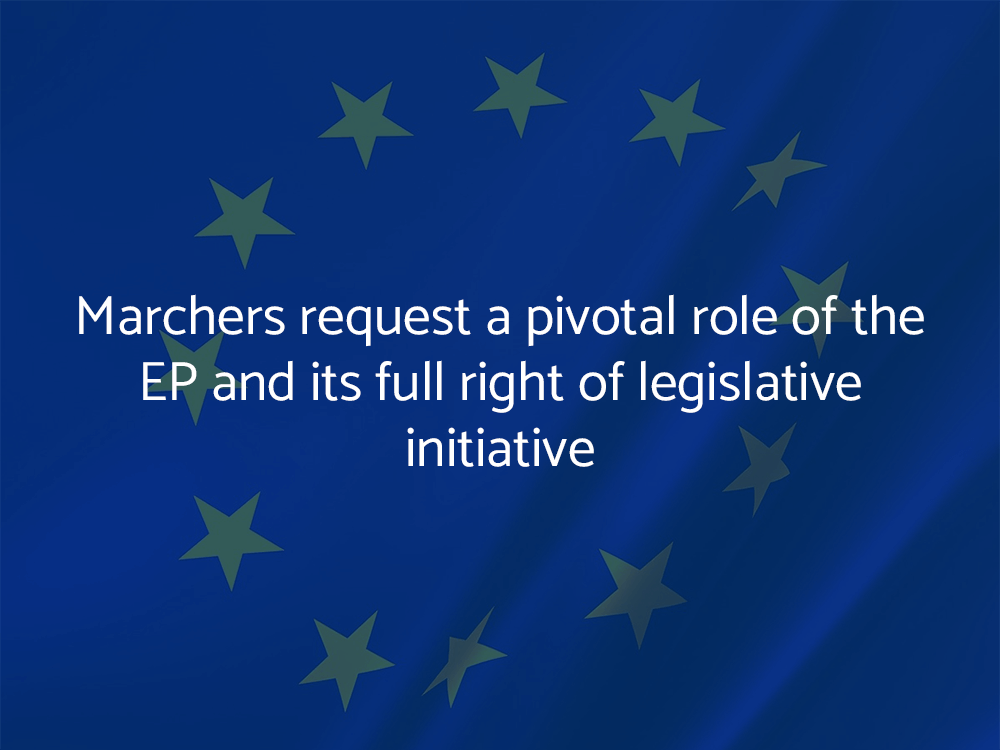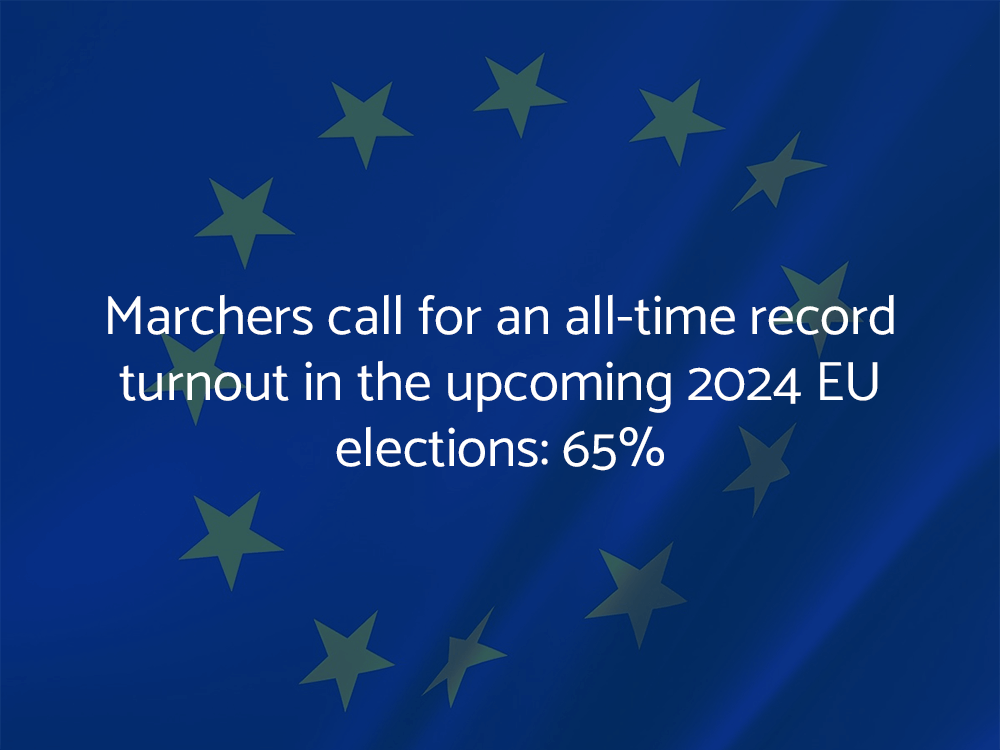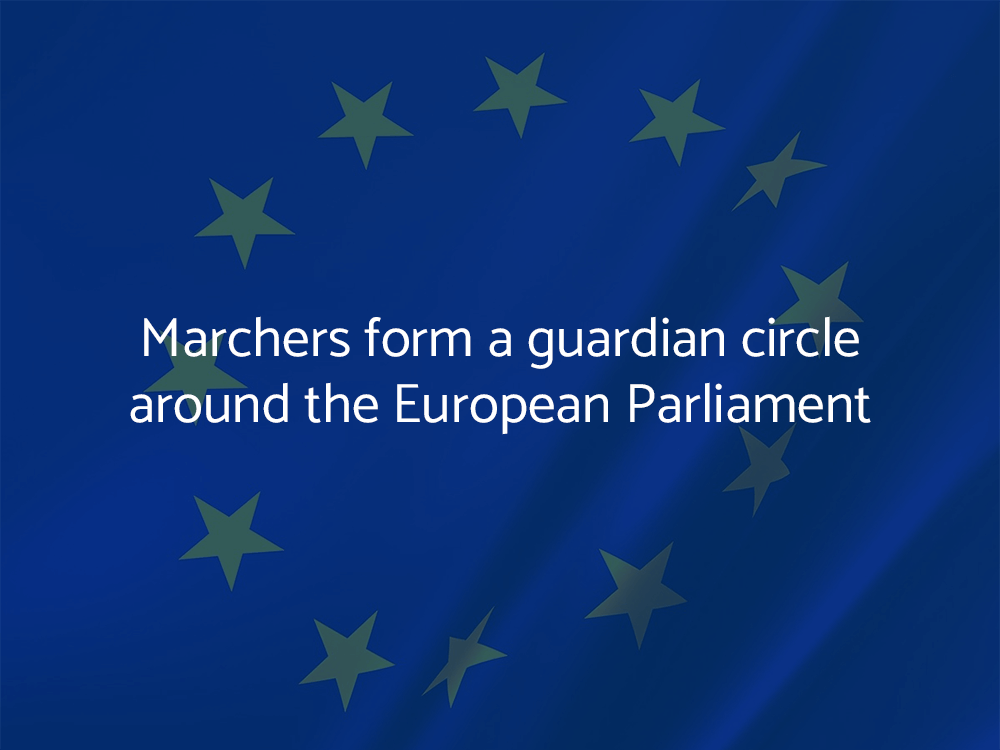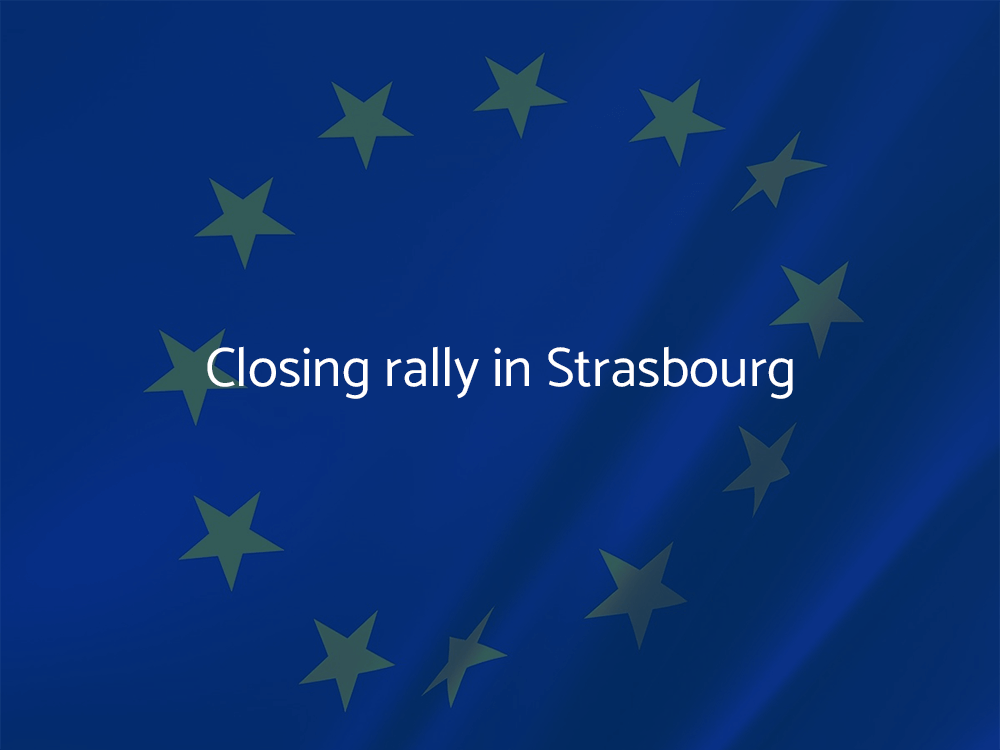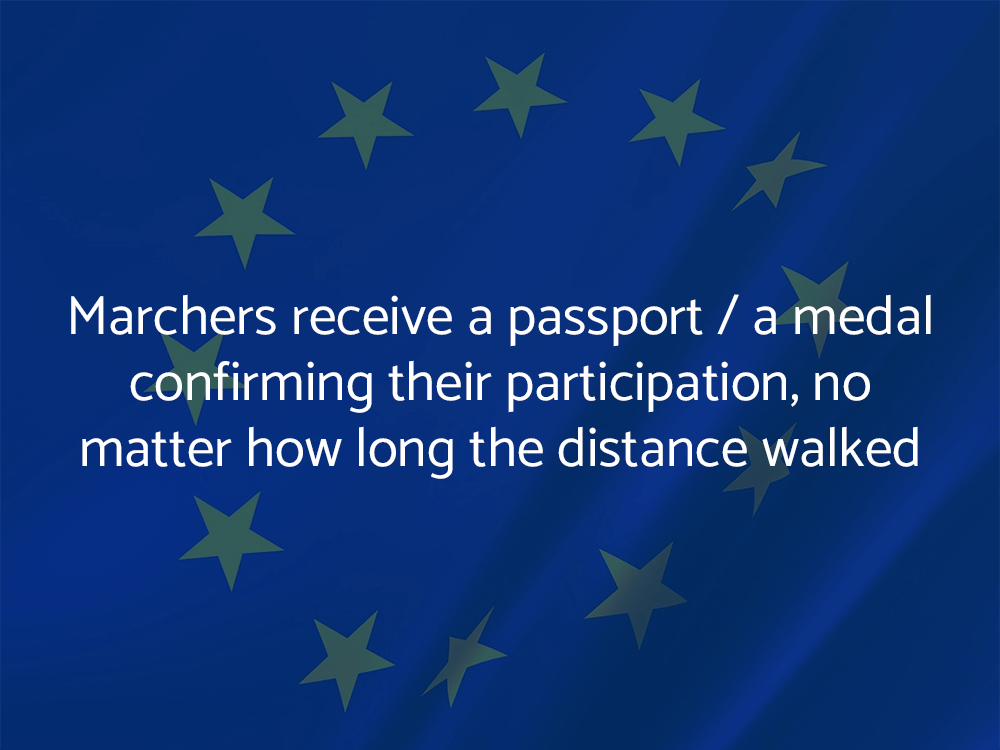For all those who want to show they are.
For all those who long to be part of the People of Europe.
Let’s Tip the Seesaw, People.
Member states still have more weight on the EU seesaw. But the price is high: The EU is losing ground. The world knows well the 27 disagree so often: Migration. Defense. Foreign affairs. Energy. Health. And it’s so easy to play them off against each other.
To get on safe ground, at last, the EU needs the legitimising power of Europe’s 440 million citizens. The power of the People of Europe.
Let’s tip the seesaw to the other side: to the side of the People of Europe.
Let Europe become a true democracy.

A Story of our Own.
Europe needs more than just laws, markets and money. It needs a soul: People who feel, think and act as free Europeans, complementary to their national identity.
We need, at last, to discover ourselves as the People of Europe. And we need to understand that no one but ourselves is called to decide the future path of Europe.
Being an Erasmus student or travelling across Europe is not enough to prove we exist. There must be more: a powerful story, entirely written by ourselves – but not a short story.
This is why we embarked on the March on Europe.
The March on Europe Supports our Natural Ally: the European Parliament.
In our capacity as self-confident citizens of Europe, the European Parliament is our natural ally. It represents best our pan-European interests and hopes. Hence, the March on Europe serves above all to declare our full support for the European Parliament and to request the substantial strengthening of its rights within the EU network.
The March on Europe will request the full right of legislative initiative for the European Parliament.
The March on Europe will encourage voters to give weight to this request by raising turnout in the next European election to a historic high: 65%.
The Eight Trails.

The northern trail
Stockholm – Strasbourg
The north-eastern trail
Helsinki – Strasbourg
The eastern trail
Kyiv – Strasbourg
The south-eastern trail
Bucharest – Strasbourg
The south-south-eastern trail
Athens – Strasbourg
The southern trail
Palermo – Strasbourg
The south-western trail
Lisbon – Strasbourg
The north-western trail
Edinburgh – Strasbourg
The March on Europe will touch at least 24 countries.
Albania
Austria
Bosnia and Herzegovina
Croatia
Czech Republic
Estonia
Finland*
France
Germany
Greece*
Hungary
Italy*
Latvia
Lithuania
Montenegro
Poland
Portugal*
Romania*
Slovenia
Spain
Sweden*
Switzerland
Ukraine*
United Kingdom*
* starting point of a trail
Some of the Guiding Principles.
- This March is supposed to celebrate the unity of us Europeans. Hence, Marchers are cordially invited to display their culture, their language, their traditions and regional origins during the March – but not to overstress their nationality.
- Applying for national or EU funding to act as the People of Europe is somewhat unworthy. We will have the power as Europeans to raise the funds for actions like the March on Europe ourselves.
- Although the seat of the European Parliament as an EU institution is the destination of the March, we also invite non-EU citizens to participate as it may be not only the current EU member states that will have their say on the future of Europe.
- The top priorities for all participants are fairness, the willingness to support others, including older and weaker people, to take part in the March on Europe, albeit only for a short distance, and the unbending and unconditional will to send a strong message of unity of all Europeans to the public.

What Marchers will Do in Strasbourg.
- Marchers form a guardian circle around the “Louise Weiss Building” of the European Parliament, thus expressing their ultimate support for the Parliament and underlining their request of a full right of legislative initiative
- The Closing Rally will offer the stage for speakers from the whole of the European civil society. Furthermore, it could be the place where the community of European citizens is sealed in a solemn act.
- The foundation stone for a sculpture, a monument or an installation, consisting of elements brought to Strasbourg by Marchers of all eight axes, is ceremoniously laid.
- On the last day, a “Concert of the March on Europe” will take place.
This is the Provisional Time Schedule of the March on Europe.
Departure in autumn 2023
at the starting points of eight axes: Lisbon, Edinburgh, Stockholm, Helsinki, Kyiv, Bukarest, Athens, Palermo, each of the axes stretching over 2,000 km approx.
Average speed of the march: 10 km/day
1- or 2-day-stops at appropriate places (cities, villages, landmarks): time for talks, action, recreation
Arrival in Strasbourg mid-May 2024
the Final Rally, the Guardian Circle, the Concert for the March on Europe
End of the March
approx. one week before the beginning of the 10th EU elections
The March on Europe Needs Effective Transnational Cooperation, Based on Trust.
- A We are Europe! core team based in Düsseldorf or Essen will act as a hub for all partners involved.
- A steering group, consisting of the core team and representatives of all eight trails, will be in charge of the general management of the MoE.
- Working groups, each of them committed to a particular task – finance, IT, social media, trail planning, events, media asf – need to be set up.
- Country teams (CT) must be sought in all countries the MoE touches.
- A plenary meeting, consisting of the steering group and representatives of all PO’s, will take place regularly.
- Most of the work will be done online. However, some travel will be inevitable.
- A MoE budget needs to be fixed.
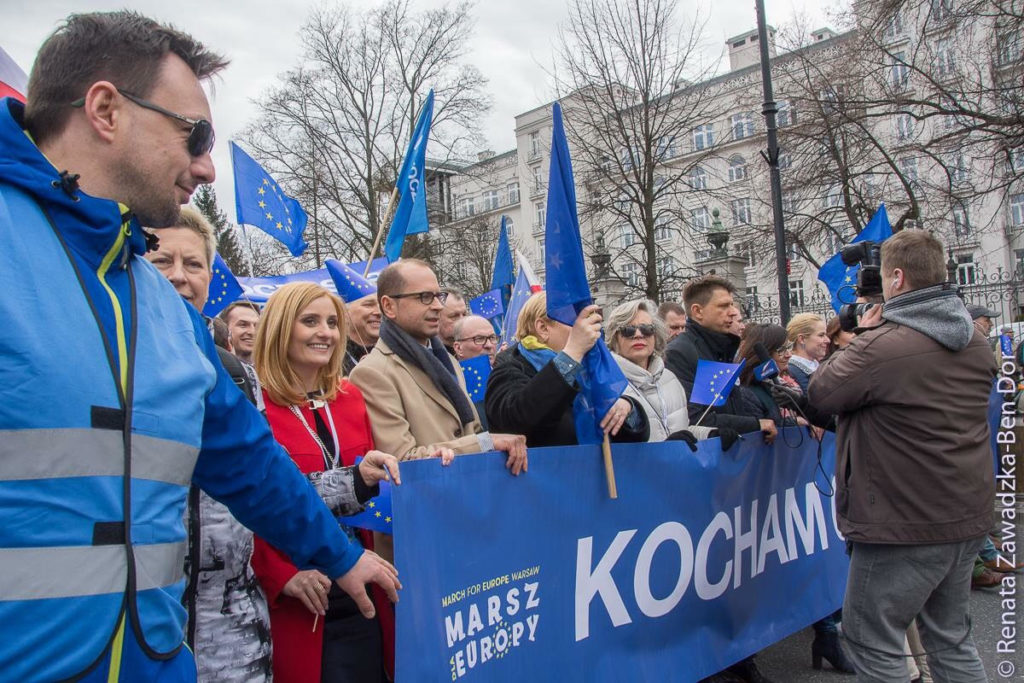
We are Looking for Reliable Partner Organisations in All 24 Countries.
- Country teams (CT’s) should have the staff, financial, digital and managerial resources to organise a march across their country.
- Fixing the trails in accordance with the steering group (by making use of experts like the European Ramblers’ Association), preparing overnight stops and encounters with local representatives, pro-European groups and media, setting up a list of youth hostels, B&B and hotels where marchers can book rooms, applying for permits where applicable, searching for local sponsors, advertising the MoE and providing assistance to Marchers during the walk are considered the main tasks of CT’s.
- Each CT, including We are Europe!, is represented in the MoE Plenary Meeting and has one vote.
- Financial issues need to be clarified in the MoE budget.
- The project can only succeed if we all work together in the spirit of European friendship!



